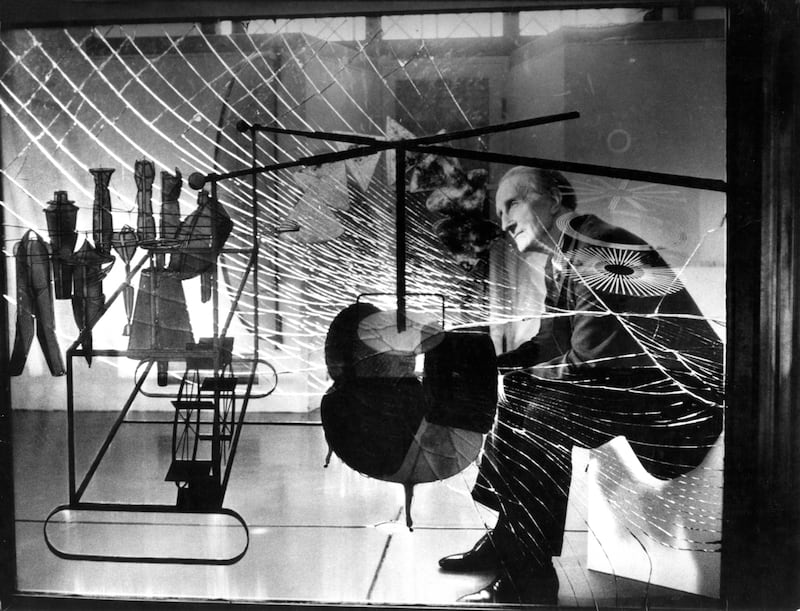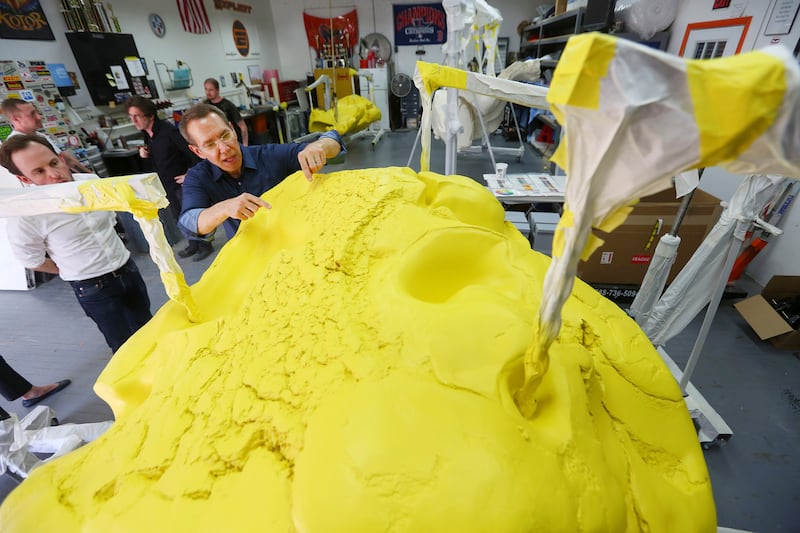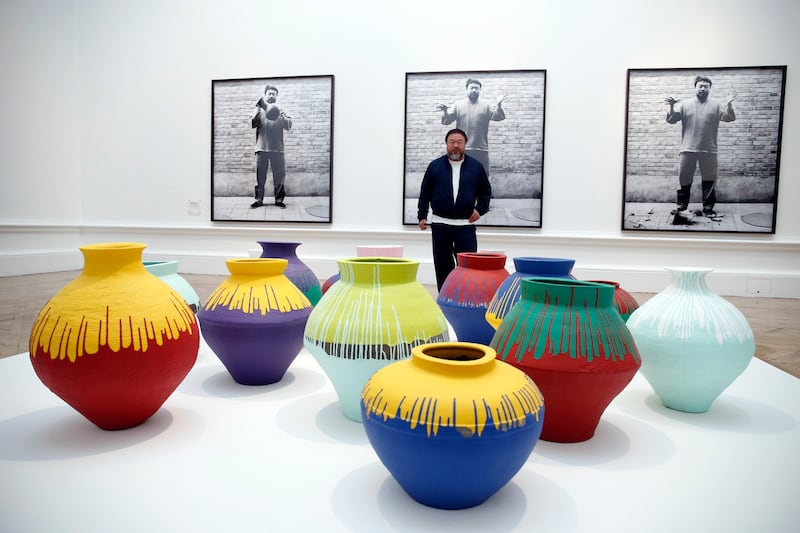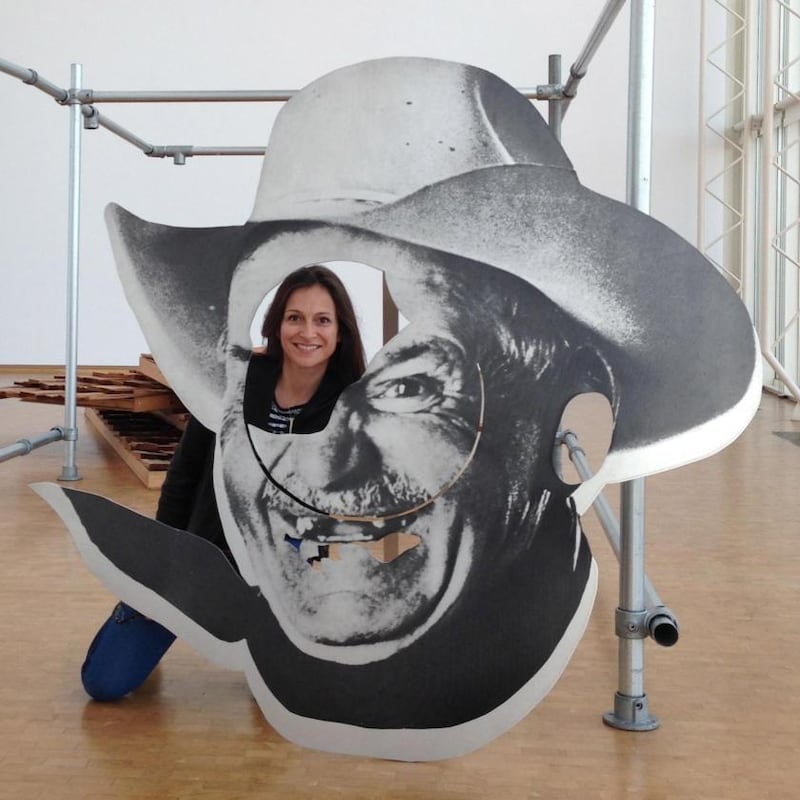Are artists different? Some lines from Thomas Kinsella are stuck in my mind: "I wonder whether one expects/ Flowing tie or expert sex …/ Of poets any longer." If you were to believe the myths from the past, artists and poets are all starving in garrets, drinking absinthe and sleeping with their muses or models (Paris 1880s), hanging out with Andy Warhol and hoovering up drugs (New York 1970s), or wandering the rain-soaked headlands before sinking, misunderstood, into bitter and embittered pints (Ireland at any time).
Gather all of these myths and you realise there is something different about the lives of artists, something that fascinates. Perhaps it’s a question of what it is about a person that not only drives them to create, even when the world does not lap up the fruits of their labours, but also seems to entitle them to a space outside the social norms.
Whatever it is, the lives of artists fascinate almost as much as their art does – sometimes more. Some people are seduced by the art world and can't quite put their finger on the seduction, while others claiming to loathe it are still betraying strong feelings. In the introduction to her book, 33 Artists in 3 Acts, Sarah Thornton first quotes Marcel Duchamp, saying "I don't believe in art. I believe in the artists", before going on to write that "artists don't just make art. They create and preserve myths that give their work clout".

In many ways, those myths started 450 years ago in Italy, when Giorgio Vasari published The Lives of the Most Excellent Painters, Sculptors and Architects. Considered the foundation of art history, most people now refer to it as simply The Lives of the Artists. It's an idiosyncratic work. In Vasari's view, Florence is the centre of the world, but given that he was knocking around with the likes of Michelangelo, you can hardly blame him.
But art has changed since then. Since Duchamp, it is just as likely to be a set of concepts as it is a painting or sculpture, and even those paintings and sculptures are unlikely to be recognisable from life. Taking place this month in the Royal Hibernian Academy, Temple Bar Gallery and the National Gallery of Ireland is The Lives of Artists, a two-day event that aims to get under the skin of those myths and explore why artists work, while opening up their studios for visits and conversations.
Making art is one thing, making a success of your art in a world that exists as a complex network of exhibitions, residencies, grand biennial shows, publications and presentations is quite another
San Francisco-based Thornton will be the lead speaker, and I caught up with her by phone ahead of her visit to Ireland. 33 Artists, her updating of Vasari's Lives is a fast-paced affair, and she gained extraordinary access to her subjects. The fact that she is a reviewer for the Economist helped, she says, as did patience. Her interviewees include Jeff Koons, Damien Hirst and Maurizio Cattelan which she sets against the more considered practices of Ai Weiwei, Martha Rosler, Laurie Simmons and Andrea Fraser. There were some I had to look up, which is a bonus, as it's always good to discover new artists, and it's also good to have Google on hand, as the book is about the people, rather than their work.
"Sometimes it was a campaign," she says. "Sometimes it would be hard to access an artist and I would wait and find the right opportunity, when it was useful for them to talk to me. So Cindy Sherman was high on my list from the beginning, and initially she said she wasn't interested in giving me an interview." This rejection came via the artist's gallery which, along with a phalanx of assistants, acts as gatekeeper for the world's leading artists.
In her book, Thornton notes a colleague’s description of Jude Tyrrell, the director of Damien Hirst’s production company, as “Cerebus, the three-headed dog who guards the gates of hell”.

If there is any single take-away for artists reading Thornton’s book for clues about achieving success, it’s this: almost all successful artists have assistants. Making art is one thing, making a success of your art in a world that exists as a complex network of exhibitions, residencies, grand biennial shows, publications and presentations is quite another. Because of this, even gatekeepers bow to the force of the power of publicity at key moments. Sherman had an exhibition coming up at New York’s Museum of Modern Art and, as Thornton puts it, “when artists have that kind of show in the works, they’re under pressure to promote it”.
Another strategy was to send a copy of her first book, Seven Days in the Art World, with a note. In one instance, the note said "I have learned some intriguing things about where your art work is hung in the Middle East…" Thornton laughs as she tells me this, while also making the point that most artists care deeply about what happens to their work. In fact she laughs frequently and comes across on the phone as an initially odd mixture of whimsical and forceful.
With a British mother and a Canadian father, Thornton has lived in London, Glasgow and Montreal, though her accent has a definite transatlantic twang. Highly informed, and a witty and intelligent thinker, she considers her words as she speaks (which is surprisingly rare, when you think about it). Taking long pauses, she is also highly determined to continue her train of thought. This I find initially disconcerting, until she pauses again before revealing: “I am actually socially awkward. My partner gets irritated with me sometimes. She’ll say ‘why couldn’t you just answer that question?’”
“I’m aware of the social convention,” she continues. “But I don’t understand why I should observe it, it doesn’t seem fun.
“I feel it as an optional, boring obligation. I think I’m a polite person. I like people a lot. I used to joke that the reason I became a sociologist was I was so socially inept I had to study it in order to kind of move through the world.”

Across Thornton’s pages, and also from my own experience, many artists seem to have minds that won’t leave them alone. Making art, and I would extend this to writing poetry and some (though not all) forms of narrative fiction, is a necessary way of making sense of the world, or simply of staying afloat within it. Most artists make work because they emotionally and intellectually need to. What happens next, when the systems of the artworld – the market, the gallery system, curators and critics – get involved is almost separate, although it exerts its own pressures.
“I am fascinated by mental difference,” Thornton says, who asked each artist one key question: what is an artist? The answers vary hugely, and it is entertaining to read Koons sliding around avoiding a direct answer. Did she ever achieve one from him, I wonder? “Not really, he just doesn’t do that. But I really came to appreciate his indirect answers. I started out just purely frustrated and I moved into fully amused by his modus operandi. It’s a game on the deepest level, so it doesn’t even feel like a game to him. He is the way he is.”
Thornton describes the idea, drawn from Canadian-American sociologist, Erving Goffman, that our public lives are a series of performances. “So I’m fascinated by the ‘less normal’. Artists, however they start out, cultivate their intellectual idiosyncrasies and they go with them. And then they manifest them into physical objects or performances, or ideas that move through the social world.” Perhaps that’s why art, and artists, are so fascinating for the very many people who, whether it’s by inclination or circumstance, have to live very “ordinary”, in terms of socially acceptable, lives. The art world can become an outlet for that desire, and buying art is buying into a talisman of escape from social conventions.
There were many different answers to Thornton’s question: Brazilian painter Beatriz Milhazes, says, “I’m like a bank worker. I come to the studio five days a week and do my job. I pay attention to detail and try not to make mistakes.”

“The point is,” says Thornton, “there are so many different answers. But if you had to come up with a single answer it would be something like Andrea Fraser says, which is that an artist is a myth”. I hear pages rustle over the phone as she goes to look up the original quote. “Here it is: ‘for me the artist is a myth that different artists customise for themselves. It has to be absolutely individuated to work. Artists can’t inhabit other people’s myths, they need to make their own.’”
This will be Thornton's first visit to Ireland. "I'm excited to visit Dublin. I have never been, it's so embarrassing, as I happen to be a passionate Francis Bacon fan. I'm getting off the plane and going straight to that studio," she says. Which brings us neatly back into the centre of another potent, and enduring myth of the life of an artist.
33 Artists in 3 Acts is published by Granta; The Lives of Artists is at Temple Bar Gallery + Studios, Dublin, this Friday and Saturday, November 16th and 17th. Sarah Thornton will give a talk, and there will be panel discussions, walking tours and studio visits; tickets €30












